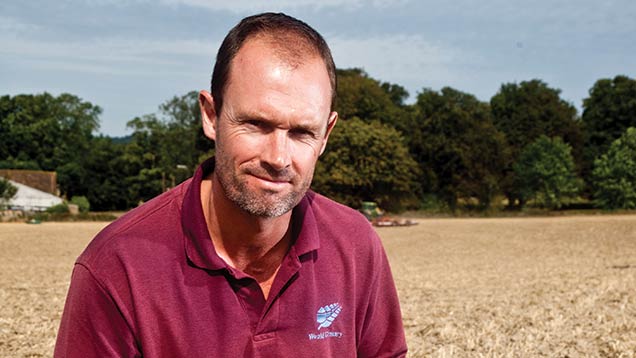Farmer Focus: Weather madness brings early disease

The continuing weather madness has seen us out checking the wheat for aphids and disease in January.
Fortunately, although there is a little brown rust in the Crusoe, it is not at concerning levels and the aphids are thankfully also away on their winter sojourns.
We do have a little spraying to do when it turns cold and dry and this is down to our foray into herbage seed (in the hope it loses less money than other crops) and the need to control some brome, in part caused by the curse of the telegraph poles.
See also: Read more from our arable Farmer Focus writers
Even more mad than the weather is the sight from the road of my oilseed rape and bean companion crop. The beans grew to thigh height and some flowered before the AstroKerb gradually turned them black.
Unfortunately there seems to be no confusion at pigeon height, as they are still finding the oilseed rape underneath, just as they did in every other system that promised hope.
I recently attended a local AHDB grazing group meeting. It’s not strictly my area, but I thought I ought to attend as it was held on my farm. The focus was cover crops and the possibility of their exploitation by livestock.
We were doing it 30 years ago, but in those days it was kale or swedes and we are now wondering how best to tweak our species mix to balance the arable need for soil structuring and the livestock need for energy and protein.
Our discussions revealed a lack of information about this and the potential benefit to arable crops. I really hope the new AHDB structure will allow some cross-enterprise research in this area.
For sheep, a payment of about 40p a head a week was bandied about as a possibility dependent on fencing, water and lookering.
However, after I stupidly mentioned that sometimes we felt we got higher yields after grazing, someone came up with the idea of paying the sheep farmer to bring them on!
I felt the Christmas Day phone call to say they were out all over the road balanced things up.
Andy Barr farms 700ha in a family partnership in Kent. Combinable crops amount to about 400ha and include milling wheat and malting barley in an increasingly varied rotation. He also grazes 800 Romney ewes and 40 Sussex cattle and the farm uses conservation agriculture methods.
